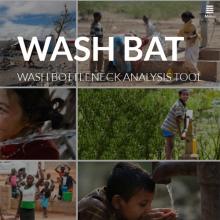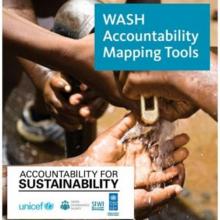
WASH Accountability Mapping Tools
the water sector, represented as a comprehensive system of accountability relations involving policy makers, service providers and communities.
Created in 2016 by UNICEF in conjunction with the World Governance Facility, Stockholm International Water Institute (SIWI) and United Nations Development Programme (UNDP), the Accountability mapping tools has as its aim encouraging building systems that can deliver reliable water and sanitation services in the long-term.
The tools enable participants to assess the status of accountability relations existing between actors of the service delivery system in a quick and comprehensive manner.
• The assessment can be conducted as a quick sector snapshot or as an in-depth diagnosis at the
service delivery level.
• The process is based on a representation of the sector in the form of a triangle of accountability. The visualisation helps identify the actors and their relations as duty bearers and rights holders.
• The findings help identify areas for priority action and recommended actions.
Reviews
There are no reviews yet.
Be the first to review " WASH Accountability Mapping Tools "
Add a review
Implementation reports
Add an implementation report
Other tools that could interest you


